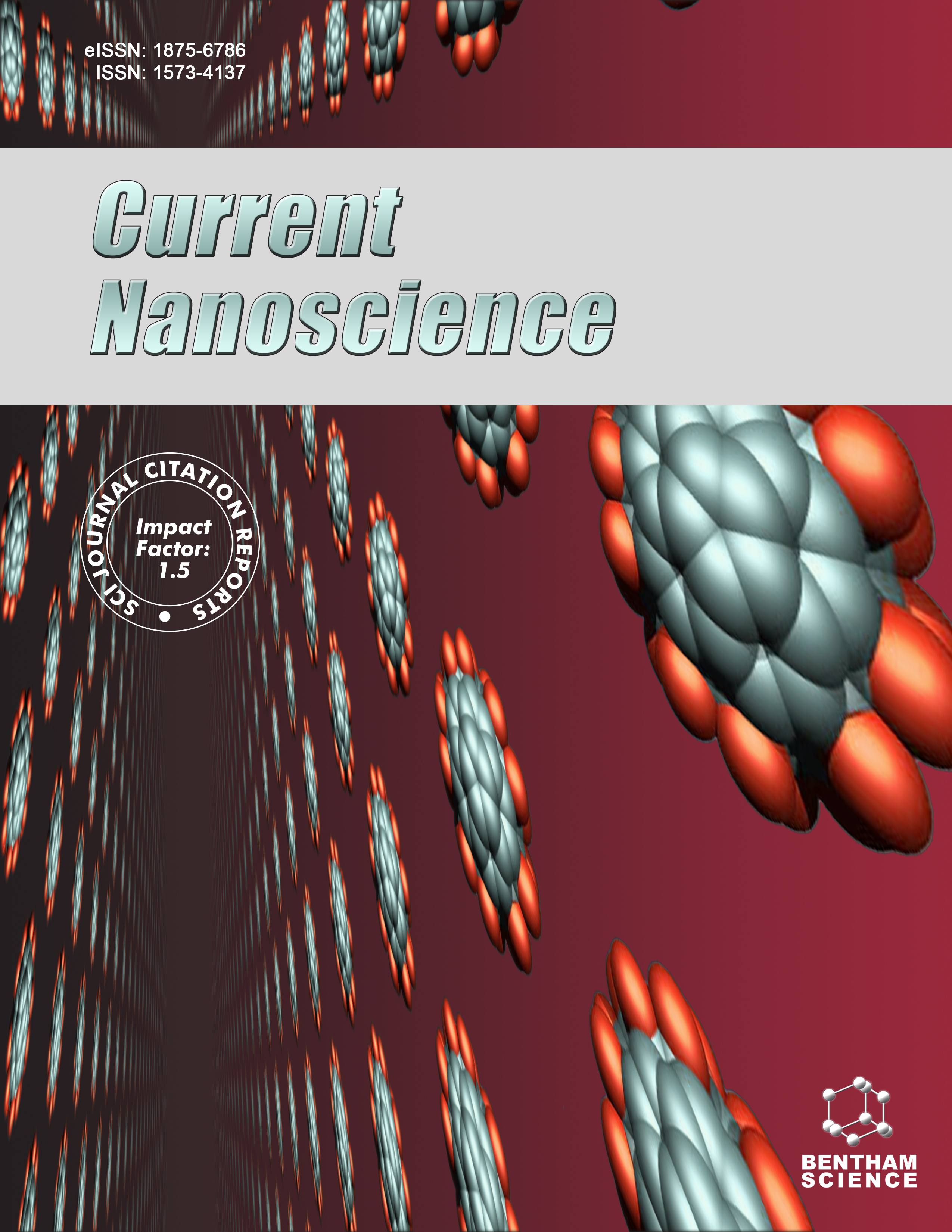- Home
- A-Z Publications
- Current Nanoscience
- Previous Issues
- Volume 1, Issue 2, 2005
Current Nanoscience - Volume 1, Issue 2, 2005
Volume 1, Issue 2, 2005
-
-
Bionanotechnology: The Science of Revealing Life with Nanostructures
More LessAuthors: Patrick Englebienne and Anne V. HoonackerNanostructures are inorganic, organic or composite materials synthesized in various forms with sizes down to the nanometer. A special interest in these nanomaterials emerged during the last decades because it was progressively recognized that the components of which they were made acquired or improved specific and interesting physical properties, as a result from their organizational packaging within such nanostruct Read More
-
-
-
Clinical Applications of Nanotechnology in Atherosclerotic Diseases
More LessAuthors: Kyle Chang and Jeng-Jiann ChiuNanotechnology can be defined as the science and engineering involved in the design, synthesis, characterization, and application of materials and devices whose smallest functional organization in at least one dimension is on the nanometer scale or one billionth of a meter. One of the great promises of nanotechnology is the application to biology and medicine. In medicine, the cardiovascular field is one of the most technicall Read More
-
-
-
A Closer Look at Protein Transduction Domains as a Tool in Drug Delivery
More LessAuthors: Hendrik Fuchs, Christopher Bachran, Iring Heisler and Mark SutherlandNew drug delivery technologies have an important niche in treatments as they enable drugs to be more effective. Remarkably, drug delivery is still considered a poor relation to drug discovery with greater than 95% of all new potential therapeutics having poor pharmacokinetics. The greatest obstruction for cytosolic release of therapeutic molecules is the membrane barrier of target cells. The use of protein transduction domai Read More
-
-
-
The Nanostructure of the Oriental Hornet (Hymenoptera, Vespinae) Cuticle and Silk and Some of their Biophysical Properties
More LessAuthors: Jacob S. Ishay, Zmira Joseph, Dmitry V. Galushko and David J. BergmanThe cuticle is the largest active organ in the insect. It consists of many parallel lamellae with vertical interlamellar support between them and of interlamellar tubular membranes. The upper part of the cuticle in the abdominal region, the epicuticle, reveals several structures: 1) at intervals of 100μm or more apart, there are depressions housing a peripheral electromagnetic photoreceptor (PER), and 2) between every two of th Read More
-
-
-
Sculpted Nanoscale Polymer Films on Micrometer Bubbles
More LessRecent colloid chemistry research has shown that it is possible to engineer surface architectures using combinations of proteins and surfactants. The architectures were investigated by a range of chemical and physical methods across a number of international research groups. These spontaneous soft-matter assemblies were examined as they form on the surface of bubbles, thin liquid films (TLF's) and macroscopic int Read More
-
-
-
Gas Adsorption of Carbon Nanotubes: Tube-Molecule Interaction and Technological Applications
More LessBy Jijun ZhaoIn this review, we summarize the current progress in the gas adsorptions of carbon nanotubes. Experimentally, the electronic and transport properties of carbon nanotubes are found to be sensitive to the adsorption of gaseous molecules. From first principle calculations, most molecules (e.g. NH3, N2, CO2, CH4, H2O, Ar, C6H6 and C6H12, etc.) adsorb weakly on nanotubes and act as charge donors to the nanotubes. With Read More
-
Volumes & issues
-
Volume 21 (2025)
-
Volume 20 (2024)
-
Volume 19 (2023)
-
Volume 18 (2022)
-
Volume 17 (2021)
-
Volume 16 (2020)
-
Volume 15 (2019)
-
Volume 14 (2018)
-
Volume 13 (2017)
-
Volume 12 (2016)
-
Volume 11 (2015)
-
Volume 10 (2014)
-
Volume 9 (2013)
-
Volume 8 (2012)
-
Volume 7 (2011)
-
Volume 6 (2010)
-
Volume 5 (2009)
-
Volume 4 (2008)
-
Volume 3 (2007)
-
Volume 2 (2006)
-
Volume 1 (2005)
Most Read This Month
Article
content/journals/cnano
Journal
10
5
false
en


